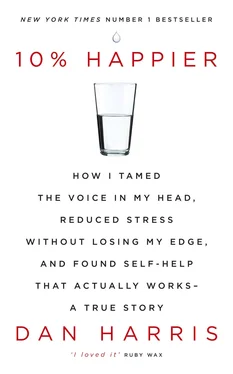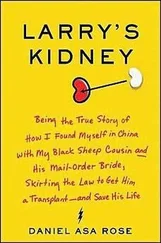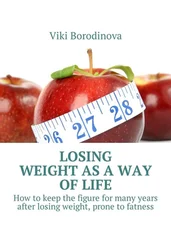Epstein’s frank admissions about the limitations of therapy tracked with my personal experiences. I was, of course, grateful to Dr. Brotman for getting me to quit drugs and then steadfastly but affably making sure I stayed the course. I was also fond of him personally—especially for his ability to point out my idiosyncrasies and hypocrisies. However, I still had that nagging and perhaps naive sense of disappointment that he had failed to come up with some sort of “unifying theory” to explain my entire psychology. Now Epstein seemed to be saying that even if Brotman had ripped the cover off some primordial wound, it wouldn’t have left me better off. The limitation wasn’t my therapist, Epstein seemed to be arguing—it was therapy.
So what exactly was this not-quite-religion that could purportedly do a better job of salving the tortured soul? I attacked the question the way I would a major investigative news story, learning everything I could. I bought a ton of books, adding them next to the already precarious stack of self-help tomes on my bedside table. (A tableau Bianca often insisted on covering up when we had company.)
According to the official story, the Buddha was born about five hundred years before Christ in northeast India, in what is now Nepal. As legend has it, his mother was spontaneously impregnated, in what sounded like the Buddhist version of the Immaculate Conception. She died seven days after the birth, leaving the boy, whose name was Siddhartha, to be raised by his father, a regional king.
The king had been advised by a local wise man that Siddhartha would grow up to either be a powerful monarch or a great spiritual leader. Eager to ensure that the boy would one day take the throne, the king arranged to have him confined to the palace walls, protected from the outside world and anything that might trigger his mystical tendencies.
At age twenty-nine, however, Siddhartha grew curious, ran away from home, and became a wandering monk. This was a pretty common practice back in those days. Penniless renunciates with shaved heads, bare feet, and tattered robes would roam the forests, seeking spiritual awakening. The prince did this for six years, until one night he sat under a bodhi tree, vowing not to get up until he’d achieved enlightenment. At dawn, the man formerly known as Siddhartha opened his eyes and gazed out at the world as the Buddha, “the awakened one.”
For a skeptic, there was obviously a lot not to like in this story. However, the substance of what the Buddha allegedly realized beneath the bodhi tree—and then began disseminating to his followers—was fascinating, illuminating, and once again appeared to have been crafted by someone who had spent a great deal of time inside my brain.
As best I could understand it, the Buddha’s main thesis was that in a world where everything is constantly changing, we suffer because we cling to things that won’t last. A central theme of the Buddha’s “dharma” (which roughly translates to “teaching”) revolved around the very word that had been wafting through my consciousness when I used to lie on my office couch, pondering the unpredictability of television news: “impermanence.” The Buddha embraced an often overlooked truism: nothing lasts—including us. We and everyone we love will die. Fame fizzles, beauty fades, continents shift. Pharaohs are swallowed by emperors, who fall to sultans, kings, kaisers, and presidents—and it all plays out against the backdrop of an infinite universe in which our bodies are made up of atoms from the very first exploding stars. We may know this intellectually, but on an emotional level we seem to be hardwired for denial. We comport ourselves as if we had solid ground beneath our feet, as if we had control. We quarantine the elderly in nursing homes and pretend aging will never happen to us. We suffer because we get attached to people and possessions that ultimately evaporate. When we lose our hair, when we can no longer score that hit of adrenaline from a war zone we so crave, we grow anxious and make bad decisions.
Unlike many of the faiths I’d come across as a religion reporter, the Buddha wasn’t promising salvation in the form of some death-defying dogma, but rather through the embrace of the very stuff that will destroy us. The route to true happiness, he argued, was to achieve a visceral understanding of impermanence, which would take you off the emotional roller coaster and allow you to see your dramas and desires through a wider lens. Waking up to the reality of our situation allows you to, as the Buddhists say, “let go,” to drop your “attachments.” As one Buddhist writer put it, the key is to recognize the “wisdom of insecurity.”
That phrase—“the wisdom of insecurity”—really struck me. It was the perfect rejoinder to my “price of security” motto. It made me see my work worries in an entirely different light. If there was no such thing as security, then why bother with the insecurity?
For 2,500 years, the Buddhists had been comprehensively mapping the mind—that tasteless, odorless, formless thing (or, more accurately, no-thing) through which we experience our entire lives. They compiled meticulous lists: The Three Characteristics of All Phenomena, The Four Noble Truths, The Four Highest Emotions, The Seven Factors of Enlightenment, etc. They also came up with names for so many of the mental habits I’d come to notice in myself, such as “comparing mind,” and “wanting mind.” They had a term, too, for that thing I did where something would bother me and I would immediately project forward to an unpleasant future (e.g., Balding → Unemployment → Flophouse ). The Buddhists called this prapañca (pronounced pra-PUN-cha), which roughly translates to “proliferation,” or “the imperialistic tendency of mind.” That captured it beautifully, I thought: something happens, I worry, and that concern instantaneously colonizes my future. My favorite Buddhist catchphrase, however, was the one they used to describe the churning of the ego: “monkey mind.” I’ve always been a sucker for animal metaphors, and I thought this one was perfect. Our minds are like furry little gibbons: always agitated, never at rest.
As compelling as the Buddhist view was for me, though, it once again threw me back up against the same old questions I’d been wrestling with since the days of Eckhart Tolle. Wasn’t the Buddhist emphasis on “letting go” a recipe for passivity? Was the denigration of desire another way of saying we shouldn’t bother to strive? Furthermore, shouldn’t we be “attached” to our loved ones?
There were other things I did not get. If Buddhism was about being happier, why was the Buddha’s signature declaration “Life is suffering”? Then, of course, there was still the issue of enlightenment. The Buddha’s claim—which, as far as I could tell, modern Buddhists, including Dr. Epstein, still believed—was that it was possible to achieve “the end of suffering,” to reach Nirvana. I couldn’t very well mock Tolle for his claims of “spiritual awakening” and give the Buddhists a pass on enlightenment.
Notwithstanding my confusion, the more I learned about the 2,500-year-old historical figure known to me previously as a lawn ornament, the more intrigued I grew. I felt like I was finally onto something truly substantial. This wasn’t just the doctrine of one weird German dude, but an ancient tradition that was given serious credence by smart people like Epstein. My hitherto haphazard quest suddenly felt infinitely more directed.
Right in the middle of our wedding reception, I decided to make a conscious effort to put everything I was learning about Buddhism to work. Dinner had been served and consumed, and the dancing was under way. That’s when we heard it: the swell of horns in the distance. Marching in were about eight Bahamians, all dressed in elaborate local costumes and playing trumpets, trombones, tubas, and drums. It was what islanders call a “Junkanoo Rush.” It took me a minute to recognize the song, U2’s “I Still Haven’t Found What I’m Looking For.” Perhaps not the best sentiment for a wedding, I thought. But never mind: the music was beautiful, and our guests were going wild. I grabbed Bianca, who was looking incandescent in her dress, and we formed a conga line behind the band. I was fully present, totally in the moment. No clinging: I knew this wouldn’t last and I was wringing every bit of pleasure out of it while I could.
Читать дальше












